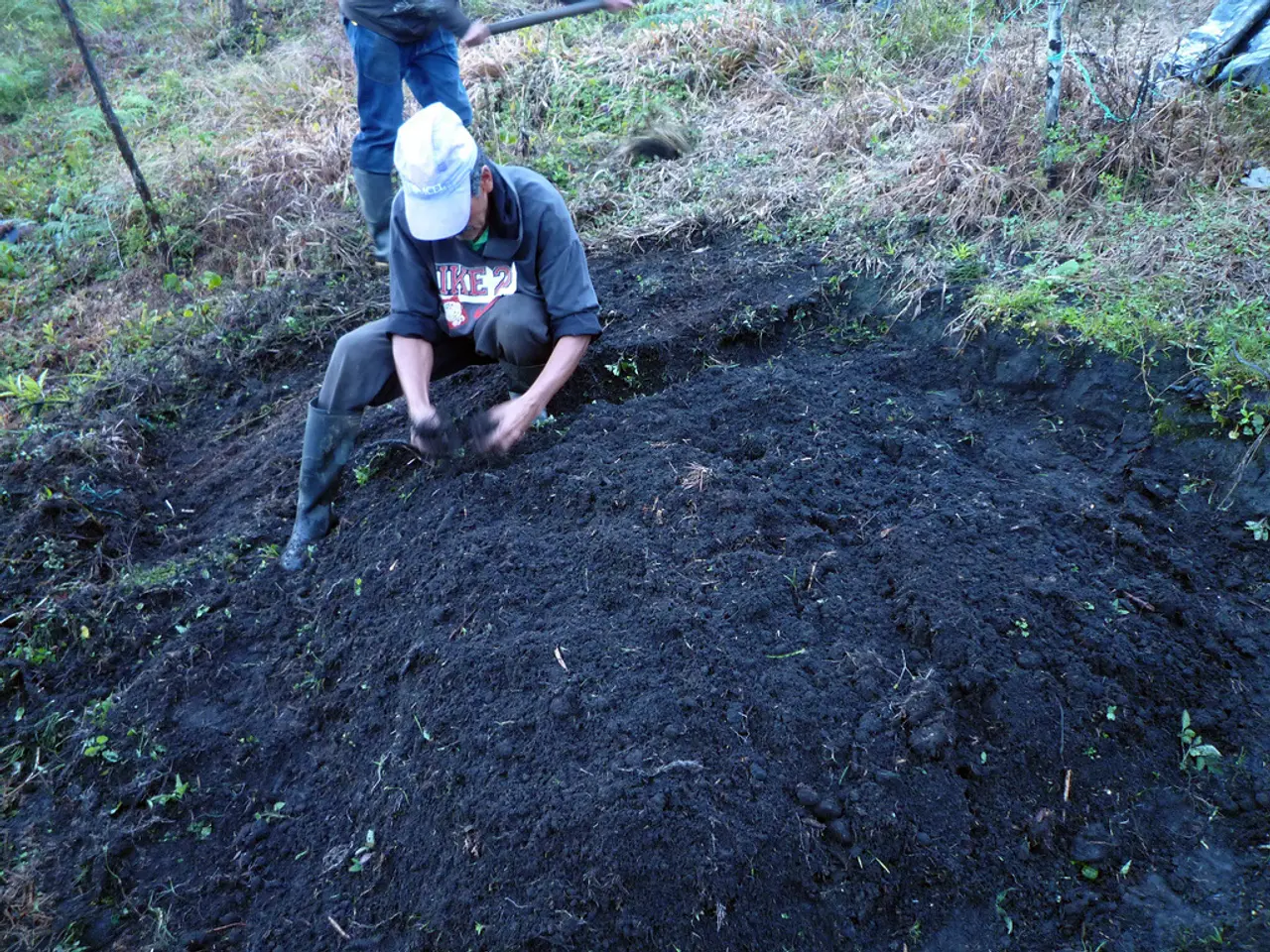Curious about the concept of no-dig gardening? Gain insights from an expert's perspective.
A Revolutionary Approach to Gardening: The No-Dig Method
In the world of gardening, a groundbreaking approach has been gaining traction – the No-Dig method. Popularized by Charles Dowding, this innovative technique has been making waves in the gardening community for its focus on minimal soil disturbance and its benefits for both the environment and the gardener.
Charles Dowding, a prominent figure in the No-Dig movement, started experimenting with this method in the early 1980s. His market garden, Homeacres in Somerset, spans over 1,300 square meters and is a testament to the success of the No-Dig approach.
The philosophy behind No-Dig gardening is simple yet profound. By avoiding traditional digging or turning over the soil, the natural structure and health of the soil are preserved. This approach fosters the biology of the soil, including earthworms, microorganisms, and soil life, which thrive in undisturbed, layered soil ecosystems.
One of the key advantages of No-Dig gardening is the increased chances of seed germination. Sowing seeds directly into the ground, under cover such as a greenhouse, reduces the likelihood of being eaten by pests and increases their chances of successful growth.
No-Dig gardening is not just about growing vegetables. It can also be applied to growing flowers, with 80% of British cut flower growers now using the No-Dig method. The method is versatile and can work in various climates, including tropical rainforests, deserts, and high altitudes.
A bed of 1.2m x 2.4m can grow a sizeable amount of food. Compost is added to the surface to speed up the decomposition process and build soil fertility quickly. Any decomposing material can be used as compost, including old manure, leaf mould, home-made compost, green waste compost, spent mushroom compost, and even old wood chip. However, compost that is still decomposing in a bag should not be used for plants as it is still fermenting and taking nutrients for its own decomposition.
No-Dig gardening is about copying nature, where soil organisms come up to the surface, eat the organic matter, take it down, and excrete it as food for other soil organisms. This results in fewer weeds, as weeds are rarely seen in No-Dig gardens. Farmers in Somerset say "chickweed follows the rotavator," but in No-Dig gardens, weeds are hardly a concern.
The method is not a slog like traditional gardening methods, which often involve digging and weeding, and a four-year crop rotation. Instead, it requires maintaining the tidiness of the garden, including removing lower leaves of brassicas and finding areas in the garden with less habitat for slugs and snails.
While the initial cost of compost may seem high, No-Dig gardening is cheaper in the long term. It requires less labor and resources, making it a more sustainable and cost-effective option for gardeners.
Charles Dowding is not just a proponent of No-Dig gardening; he is also a teacher. He offers courses and speaks a lot about No-Dig gardening. He is even writing a No-Dig book for children, coming out in 2023.
In a time when the world needs positive news stories, No-Dig gardening is a strong, positive news story. Its focus on sustainability, resilience, and respect for the living soil ecosystem resonates with a growing environmental awareness and a strong demand for courses and books on the subject.
However, there is currently a compost shortage due to many people gardening. This underscores the importance of responsible composting practices and the need for more compost producers to meet the growing demand.
In conclusion, Charles Dowding’s No-Dig approach is grounded in soil health and minimal soil disruption. It promotes sustainability and resilience in gardening by respecting and nurturing the living soil ecosystem rather than disturbing it. For those looking to make a positive impact on their gardens and the environment, the No-Dig method is a promising solution.
[1] Dowding, C. (2017). No Dig Gardening: A Complete Guide for Allotments, Courtyard, Kitchen Gardeners & Smallholdings. Green Books. [2] Dowding, C. (2019). The No-Dig Garden: A Revolutionary Approach to Growing Fruit and Vegetables. Green Books.
- The No-Dig method, a revolutionary approach in gardening, focuses on minimal soil disturbance and has environmental benefits, promoting the natural structure and health of the soil.
- By avoiding soil disturbance, the No-Dig method fosters the biology of the soil, including earthworms, microorganisms, and soil life, thriving in layered soil ecosystems.
- The No-Dig method can be applied to more than just growing vegetables; it is now used by 80% of British cut flower growers for its versatility in various climates.
- In a No-Dig garden, fewer weeds are seen as weeds are rarely a concern due to maintaining soil health and the biology of the soil.
- No-Dig gardening is not only sustainable but also cost-effective in the long term, saving on labor and resources, making it an attractive option for gardeners who want a positive impact on their gardens and the environment.




